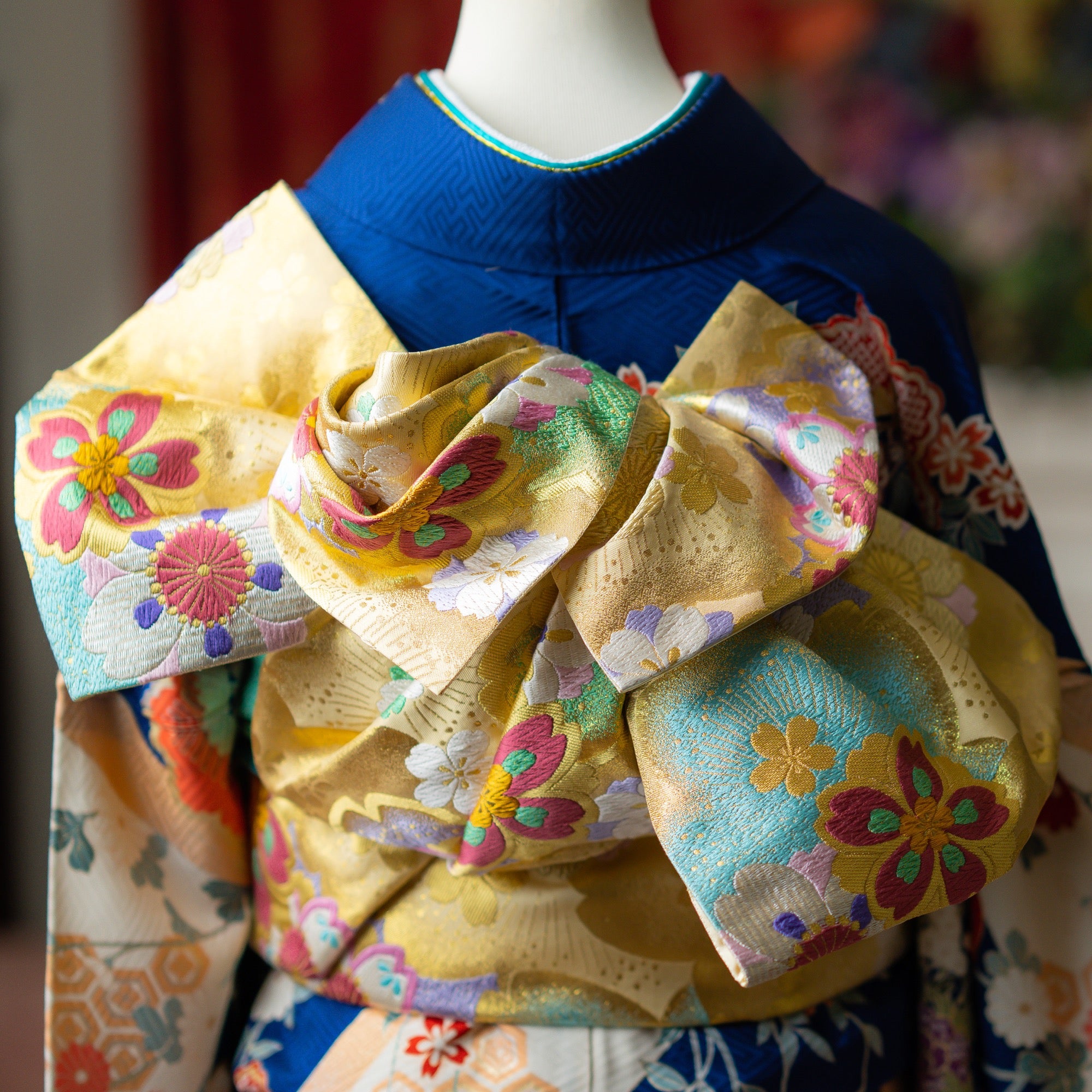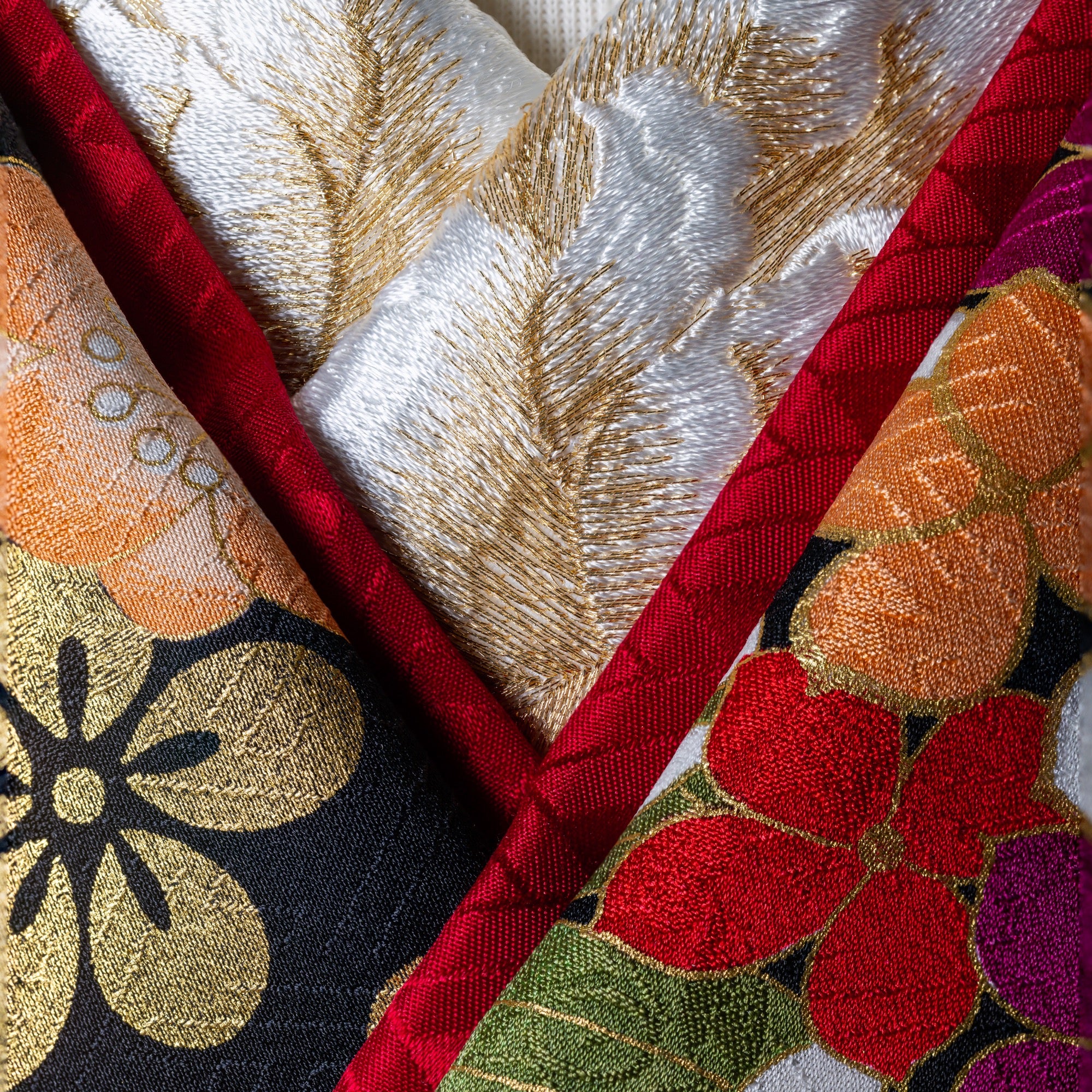
Obi Length
Immersed in Japanese Tradition: The Length of the Obi
The kimono is more than just a garment; it is an emblem of the elegance and heritage of Japan. An integral component of its classic beauty is the obi, a lengthy sash knotted around the waist. In addition to its practical use, the obi is an artistic creation that can vary in length, pattern, and symbolic significance. Obi lengths are a vital part of traditional Japanese attire, so come along as we delve into this fascinating topic.
The Obi and Its Role in Traditional Japanese Clothing:
A Comprehensive Overview.
The obi, with its elegant sweep, is the focal point of a kimono outfit. In addition to improving the kimono's overall appearance, it serves a functional purpose by keeping the garment in place. A person's age, marital status, and even the occasion for which they are wearing an obi can be inferred from the knot.
Variations in Length: Exploring Different Styles
1. Nagoya Obi — This obi is well-liked by ladies and is around 3.6 meters (11.8 feet) long. A lot of people love it because of how simple it is and how easy it is to use.
2. Obi Fukuro — This kind is rather longer, measuring approximately 4.2 meters (13.8 feet). It is saved for the most formal occasions when dressed in its most lavish and intricate forms.
3. Maru Obi — The Maru obi is the most luxurious and extravagant type, reaching a maximum length of 4.5 meters (14.8 feet). It's characterized by patterns that run throughout its length and width and is typically worn for very formal events like weddings.
4. Hanhaba obi — This type of obi is half as wide as a traditional obi and nearly 3.6 meters (11.8 feet) long. Because of its easygoing style, it pairs nicely with yukatas and summer kimonos.
5. Children's Obi —To fit their smaller frames, children's obi are typically narrower and shorter. For younger wearers, a height of around 3 meters (9.8 ft) is more appropriate.
Modern Adjustments and Their Cultural Significance
Aesthetically, the length of an obi is one way that it conveys cultural significance. A more significant occasion calls for a longer and more elaborate obi. Modern Japanese people still place a high importance on traditional hair lengths, but shorter, more practical cuts are quickly gaining popularity.
FINAL THOUGHTS: How History and Technology Interact
The obi is the most prominent cultural treasure in Japan. As a result of these changes in length, we can see how practicality and tradition have evolved alongside fashion. The smallest obi tells a story of grace, which is why the Japanese kimono is a timeless masterpiece.
An updated version of the blog post is available here; it now includes a new section about the skill and complexity required to knot longer obi and acknowledges Oshimoto Sueko's exceptional efforts in this field. We have skillfully included the extra section in the English translation:
Learning to Tie a Long Obi: A Fine Art Perfected Through Practice
With longer obis, especially those exceeding 4 meters (approximately 13 feet), an intriguing aspect of obi tying becomes apparent. Making these calls for intricate knotting techniques known as kawari-musubi. It takes a skilled approach honed over many years of training to achieve the perfect balance and form. Because of variations in material and rigidity, the proper way to tie an obi is unique for each style.
Oshimoto Sueko has been dressing kimonos for over 30 years and is widely considered an expert on the topic of obi tying. Oshimoto has not only mastered this intricate art form, but she has also introduced novel and useful advances. The learning curve for elegantly wearing an obi has been significantly reduced thanks to her revolutionary obi belt. This breakthrough elevates obi tying to a whole new aesthetic by fusing time-honored craftsmanship with contemporary ease of use.
Bringing Together Time-Honored Methods with Cutting-Edge Innovations
A significant turning point in the evolution of traditional Japanese apparel has been highlighted by Oshimoto's work. There is a rising tendency to update traditional traditions to suit contemporary day demands, even though obi tying has a treasured and extensive history. An obvious sign of this is the development of obi belts that are easier to wear, ensuring that the cultural significance and elegance of the obi will continue to resonate in modern Japan.

